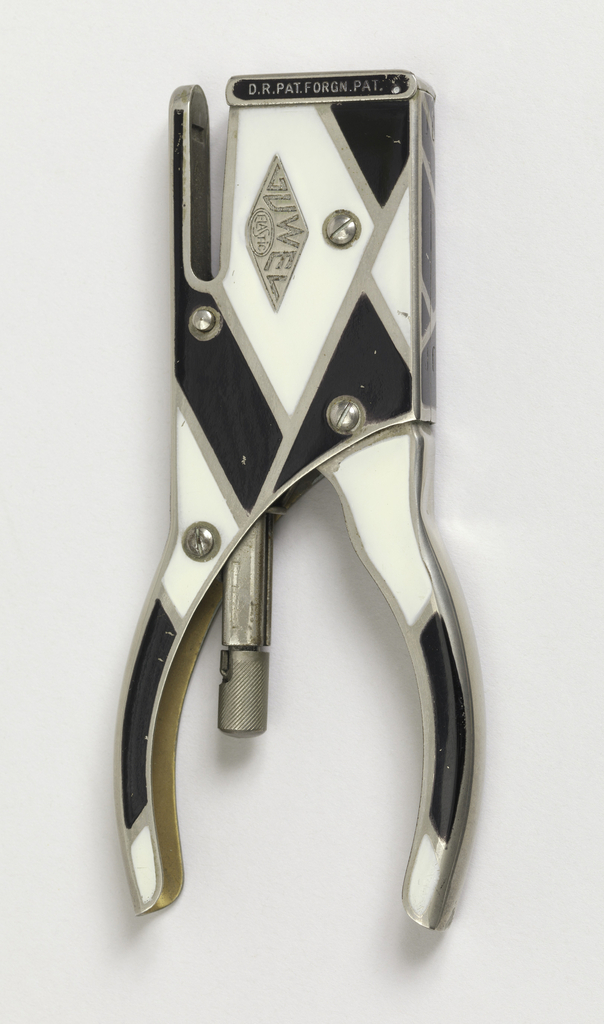The design for this stapler was patented in the United States in 1934 by Fridolin Polzer who was at the time working for E.H. Hotchkiss Company, a leading manufacturer of stapling machines, based in Norwalk, Connecticut. In Japanese, the word for “stapler” is “hotchikisu” after the E.H. Hotchkiss Company, which first shipped staplers to Japan in 1910. However this stapler’s patent (Des. Pat. 1,983,397) is not assigned to a particular manufacturer. Therefore Polzer likely developed and sold this patent to a number of different manufacturers worldwide, including Elastic GmbH in Mainz, Germany who produced this “Juwel” stapler in about 1935. E.H. Hotchkiss manufactured an example very similar to the German model even in its enamel decoration and the British maker Kartro, among others, manufactured staplers using Polzer’s form and mechanism.
This “Juwel” stapler’s popularity was dually due to its user-friendly efficiency and styling. The front end of the stapler had a removable housing for the loading of staples into a hollow guide. Polzer also patented a fundamental design of staples as wired-together strips that would fit such a housing. The ergonomic hand-held mechanism resembled pliers and was a practical improvement upon the earlier tabletop stapler models that sometimes required a small mallet to operate in order that the machine’s plunger could separate the staples from their strip and drive them into a stack of paper. The geometric design in enamel elevates the stapler from a functional machine to an artful addition to the 1930’s office desk. The design was also available in an orange and yellow color combination. Along with other 1930’s staplers such as the streamlined “Aristocrat” (ca. 1937) and “Zephyr” (ca. 1937) this “Juwel” is an excellent example of how manufacturers used modern styling to connect to consumer taste and symbolize the arts of the period. The “Juwel” continues to be manufactured today by the German manufacturer Leitz among others.
Emily Orr is Assistant Curator of Modern and Contemporary American Design at Cooper Hewitt, Smithsonian Design Museum.

One thought on “Juwel for a Tool”
lynne simon on May 12, 2020 at 9:27 pm
Hello, I have a wonderful specimen of this stapler (not bejeweled) which I believe may have emigrated with my Grandfather when he left Germany to the United States in 1938.
I’d love to send a photo but I’d REALLY love to know whether there are staples made available today that fit this lovely heirloom.
Thank you Emily!